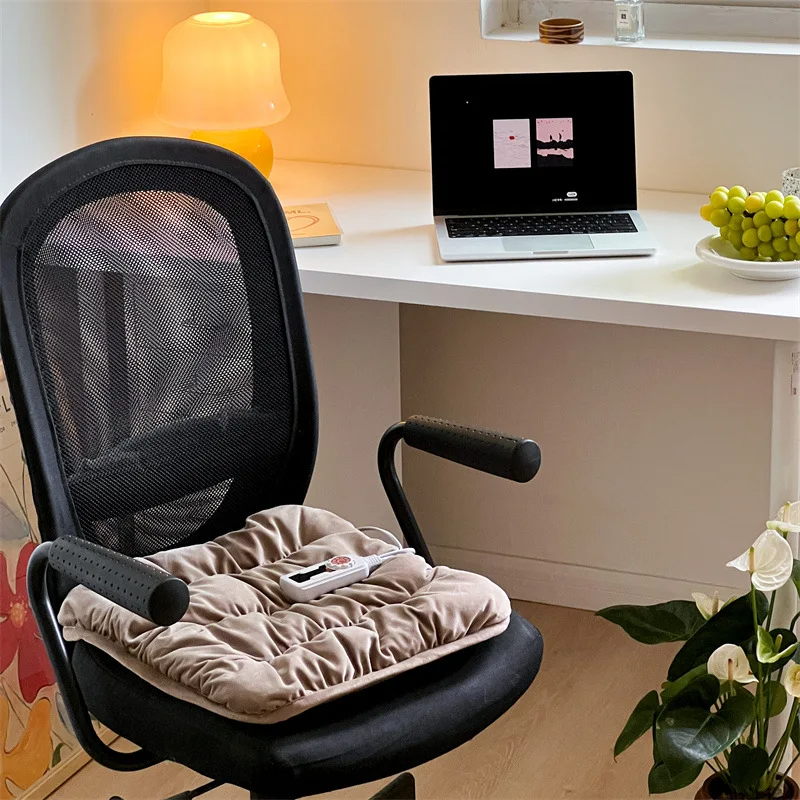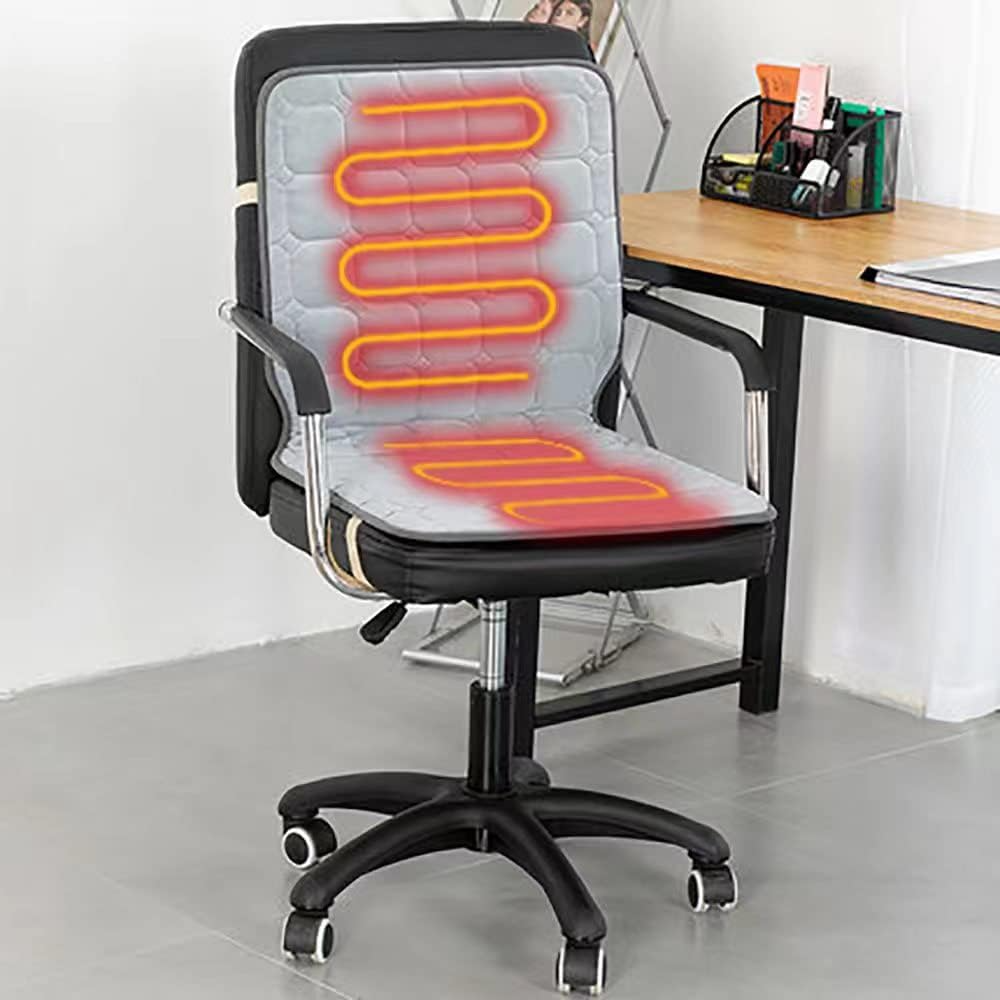 Introduction:
Introduction:
Being comfortable while working is essential for productivity, focus, and overall well-being in 2024. The office chair plays a crucial role in providing the necessary support and comfort during long hours of sitting. If you find your office chair lacking in comfort, there are several steps you can take to make it more ergonomic and enjoyable to use. In this comprehensive guide, we will explore various methods and techniques to make your office chair more comfortable. By implementing these tips, you can create a workspace that promotes comfort, reduces the risk of discomfort or pain, and enhances your overall work experience.
Adjusting Chair Height and Position
Chair Height:
Adjust the chair height so that your feet are flat on the floor, and your knees are at a 90-degree angle.
This promotes proper posture and reduces strain on your lower back and legs.
Seat Depth and Angle:
Adjusting the seat depth of your chair is vital for ensuring proper thigh support and preventing pressure on the back of your knees. When sitting, your thighs should be fully supported by the seat, with a few inches of space between the edge of the seat and the back of your knees. This helps to promote healthy circulation and reduce discomfort in the legs. Additionally, setting the seat angle to a slight tilt forward can help maintain a neutral spine position. What is the difference between a gaming chair and an office chair.
A gentle forward tilt encourages the natural curvature of the lumbar spine, reducing the risk of slouching and promoting a more ergonomic seating posture. This adjustment can also help alleviate pressure on the spine and pelvis, reducing the likelihood of discomfort and promoting overall comfort during prolonged periods of sitting. Combined, these adjustments to the seat depth and angle contribute to a more ergonomic seating experience, supporting proper posture and overall comfort while minimizing the potential for discomfort and strain.

Lumbar Support
Lumbar Support Cushion:
If your chair lacks proper lumbar support, use a lumbar support cushion to maintain the natural curve of your lower back.
Position the cushion at the base of your spine to provide additional support and relieve tension.
Adjusting Lumbar Support:
Experimenting with the adjustable lumbar support feature of your chair can significantly impact your comfort and overall posture. Start by adjusting the lumbar support to various positions to find the setting that provides optimal support and comfort for your lower back. By testing different settings, you can determine the level of firmness or softness that best suits your individual needs, as well as the positioning that aligns with the natural curve of your spine.
It’s important to pay attention to how your body feels in each position and to make gradual adjustments until you find the most comfortable setting. Proper lumbar support can help alleviate lower back pain, reduce strain on the spine, and promote better posture while seated. Taking the time to explore and fine-tune the lumbar support feature of your chair can lead to a more ergonomic and supportive seating experience, ultimately contributing to your overall well-being during extended periods of sitting.

Armrests and Arm Support
Armrest Height:
Adjusting the armrest height of your chair is crucial for maintaining proper alignment and reducing strain on your upper body. Setting the armrests at the correct height ensures that your forearms are parallel to the floor and your shoulders remain relaxed. This alignment promotes a more ergonomic seating position, minimizing the risk of discomfort and strain in the neck and shoulders. When your arms are properly supported, it helps to reduce tension in the shoulders and upper back, allowing for a more comfortable and natural seating posture.
By achieving proper alignment, you can prevent the strain that often results from unsupported arms and hunched shoulders, promoting better overall comfort and reducing the risk of musculoskeletal issues. Adjusting the armrest height to create this parallel positioning encourages a more natural and comfortable arm support, ultimately contributing to a more ergonomic and supportive seated experience. Properly positioned armrests help maintain a more relaxed and balanced posture, enhancing overall comfort and well-being during prolonged periods of sitting.
Armrest Width:
Adjusting the armrest width on your chair can significantly impact your overall comfort and posture during extended periods of sitting. It is important to find a setting that allows your arms to be comfortably supported without being too close or too far apart. Experiment with different armrest width adjustments until you find the setting that aligns with the natural position and width of your shoulders, allowing for a relaxed and natural positioning of your arms.
Armrests that are too close together can cause shoulder and arm discomfort, while armrests that are too far apart can lead to strain and poor posture. Finding the optimal armrest width can contribute to a more ergonomic and supportive seating experience by reducing muscle strain and promoting a more comfortable and natural arm position. Taking the time to fine-tune the armrest width on your chair can ultimately lead to improved comfort and well-being, especially during long hours of sitting.

Armrest Padding:
If you find that your chair’s armrests lack adequate padding, there are several options to enhance their comfort and support. One solution is to consider adding armrest pads or cushions to provide additional cushioning and support for your arms. These accessories are designed to attach easily to the existing armrests, providing a layer of plush padding that can alleviate pressure and enhance overall comfort. Armrest pads can come in various materials, such as memory foam, gel, or plush fabric, allowing you to choose the option that best suits your preferences and needs.
By adding these pads, you can create a more comfortable and supportive surface for resting your arms, thereby reducing strain and enhancing your overall seated experience. Additionally, armrest pads can also help promote better posture by offering a more ergonomic arm support position. Investing in quality armrest pads or cushions can be a simple yet effective way to customize and improve the comfort of your chair, especially during prolonged periods of sitting.
Seat Cushion and Padding
Seat Cushion:
If your chair has a hard or uncomfortable seat, consider using a seat cushion to provide additional padding and support.
Look for cushions made from memory foam or gel for optimal comfort.
Seat Pressure Relief:
If you experience discomfort or pressure points while sitting, shift your weight and change positions periodically.
Take short breaks to stand up, stretch, and walk around to relieve pressure and improve circulation.
 Proper Posture and Movement
Proper Posture and Movement
Sitting Posture:
Sit with your back straight, shoulders relaxed, and feet flat on the floor.
Avoid slouching or hunching over, as this can strain your back and neck.
Regular Micro Movements:
Make a conscious effort to change your sitting position and engage in micro movements throughout the day.
Slide your feet forward and back, perform gentle stretches, and rotate your shoulders to prevent stiffness and promote blood circulation.
Taking Breaks and Stretching
Regular Breaks:
Take short breaks every hour to stand up, stretch, and walk around.
This helps relieve muscle tension and promotes overall blood circulation.
Stretching Exercises:
Incorporate stretching exercises into your breaks to relieve muscle tightness and improve flexibility.
Focus on stretching your neck, shoulders, back, and legs.

Additional Comfort Enhancements
Footrest:
When your feet don’t comfortably reach the floor while sitting, it can lead to discomfort and poor posture. Using a footrest or an adjustable footrest can provide crucial support and help promote proper posture. A footrest serves as a platform to elevate your feet, allowing them to rest comfortably and reducing strain on your legs and lower back. Adjustable footrests offer the flexibility to customize the height and angle, accommodating individual preferences and comfort needs.
By utilizing a footrest, you can ensure that your feet are properly supported, reducing pressure on the legs and promoting better blood circulation. This can alleviate discomfort and fatigue, especially during long periods of sitting. Additionally, a footrest can help align your body into a more ergonomically favorable position, minimizing the risk of developing musculoskeletal issues. Investing in a footrest or adjustable footrest can make a significant difference in your overall seated comfort and posture, promoting better overall well-being during extended periods of sitting.
Desk Setup:
Ensure that your desk and computer are ergonomically set up to complement your comfortable chair.
Adjust the desk height and monitor position to maintain a neutral posture and reduce strain on your neck and eyes.
Conclusion:
Making your office chair more comfortable is essential for enhancing your work experience and overall well-being. By following the tips and techniques outlined in this comprehensive guide, you can create a workspace that promotes proper posture, reduces discomfort, and supports optimal productivity. Remember to adjust your chair height and position, use lumbar support, armrests, and seat cushions, and incorporate regular breaks and stretching exercises into your daily routine. By prioritizing comfort and ergonomics, you can transform your office chair into a comfortable and supportive seating solution.



